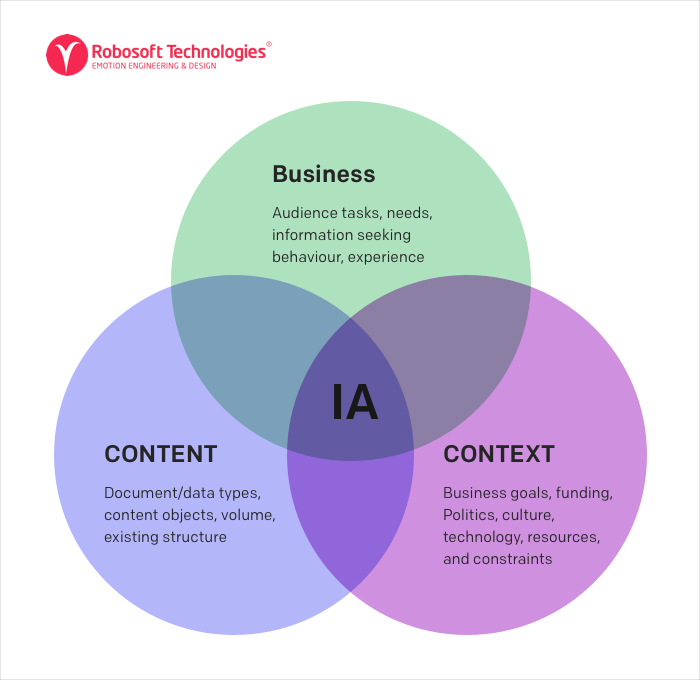
Shaping Seamless Experiences
In the fast-paced digital era, the ability to access information swiftly and seamlessly is vital in creating remarkable user experiences. This is where Information Architecture (IA) comes into play. Imagine IA as the architect behind the scenes, designing the blueprint for intuitive and user-friendly digital platforms. In this blog post, we’re going to dive into the fascinating world of Information Architecture, exploring its significance, core principles, and the range of benefits it brings to the table when creating effective digital experiences.
Importance of Information Architecture
Why is Information Architecture so important? Well, imagine visiting a website or using an app where you can’t find what you’re looking for or struggle to navigate through a maze of confusing menus. Frustrating, right? That’s where IA steps in, shaping the way users interact with digital content. By employing IA principles, designers create a well-organized framework that allows users to seamlessly find the information they need, understand the relationships between different elements, and complete tasks efficiently.
Organizing Digital Content
At the heart of IA lies the art of organizing information in a logical and meaningful way. This involves grouping related content together and establishing clear hierarchies, making it easier for users to grasp the structure of the digital space they’re navigating. Additionally, effective navigation systems play a vital role in guiding users through different sections or pages. Thoughtfully designed menus, search functionalities, and breadcrumb trails provide users with a compass to explore the digital landscape with ease and confidence.
Clear Directions with Signposting
Labeling and signposting are other crucial aspects of IA. Clear and consistent language helps users understand the content and context, ensuring they can make informed decisions as they navigate through the digital platform. And let’s not forget about the power of a robust search function. By optimizing search features, IA allows users to quickly find specific information using keywords or filters. This seamless search experience saves time and frustration, delivering relevant results at their fingertips.
Signposting in Information Architecture involves using visual and textual elements to provide clear directions and context to users as they navigate through a digital platform. It helps users understand their current location within the platform, the available paths or options for exploration, and how to reach their desired destination. This can be achieved through consistent labeling, breadcrumb trails, visual cues such as icons or navigation bars, and clear instructions or prompts. Signposting ensures that users can easily orient themselves within the digital space and navigate with confidence, enhancing their overall user experience.
Power of Robust Search Functionality
The benefits of Information Architecture extend far beyond a smooth user experience. Implementing strong IA practices enhances usability, taking user satisfaction and engagement to new heights. Users can effortlessly find what they’re looking for, encouraging them to explore further and stay engaged with the digital platform. Moreover, IA streamlines content discovery, making it easy for users to locate the information they need quickly and efficiently. This saves them valuable time and enables them to accomplish their goals more effectively.
Benefits of Information Architecture
One of the greatest advantages of a solid IA framework is its scalability. As businesses grow and evolve, IA provides the flexibility to accommodate new information and features without disrupting the user experience. It ensures that the digital platform remains well-structured and easy to navigate, even as the content expands.
Another benefit lies in content management. With a well-designed IA, content creators and managers have a clear structure to follow, making it easier to create, update, and maintain digital content. Consistency is ensured, ensuring that users encounter a seamless experience across the platform.
Scalability and Adaptability
Information Architecture serves as the foundation for crafting intuitive and user-friendly digital experiences. By organizing and structuring information effectively, IA empowers users to effortlessly navigate through digital platforms. Whether it’s a website, app, or internal system, IA plays a crucial role in enhancing usability, improving findability, supporting scalability, and facilitating content management.
Streamlining Content Management
So, the next time you visit a website or use an app and find yourself seamlessly navigating through the content, take a moment to appreciate the magic of Information Architecture behind the scenes. It’s the invisible hand that ensures your digital journey is a delightful and efficient one, enabling you to find what you’re looking for and engage with the content that matters most to you.
Sources:
